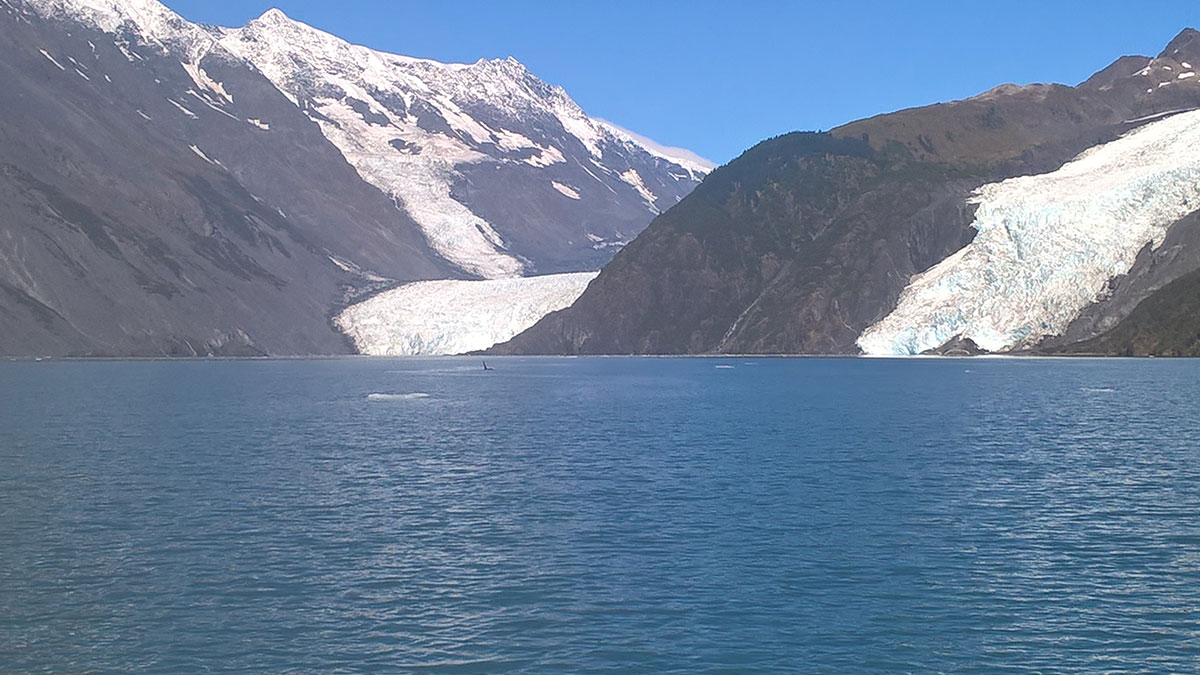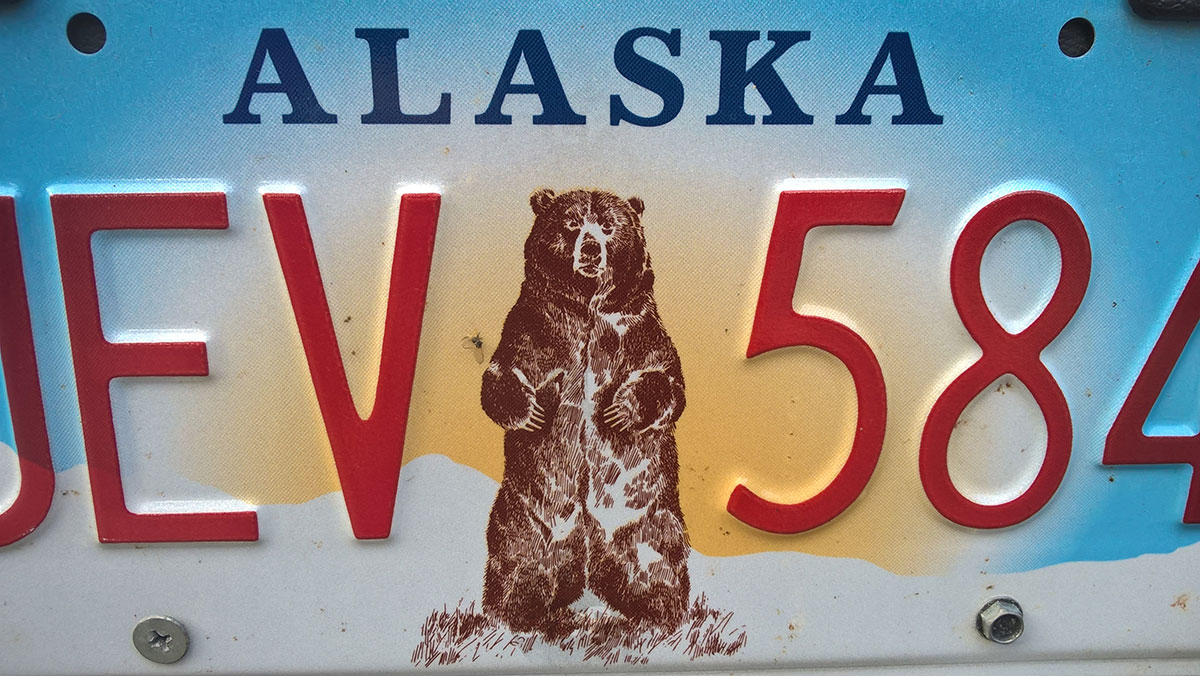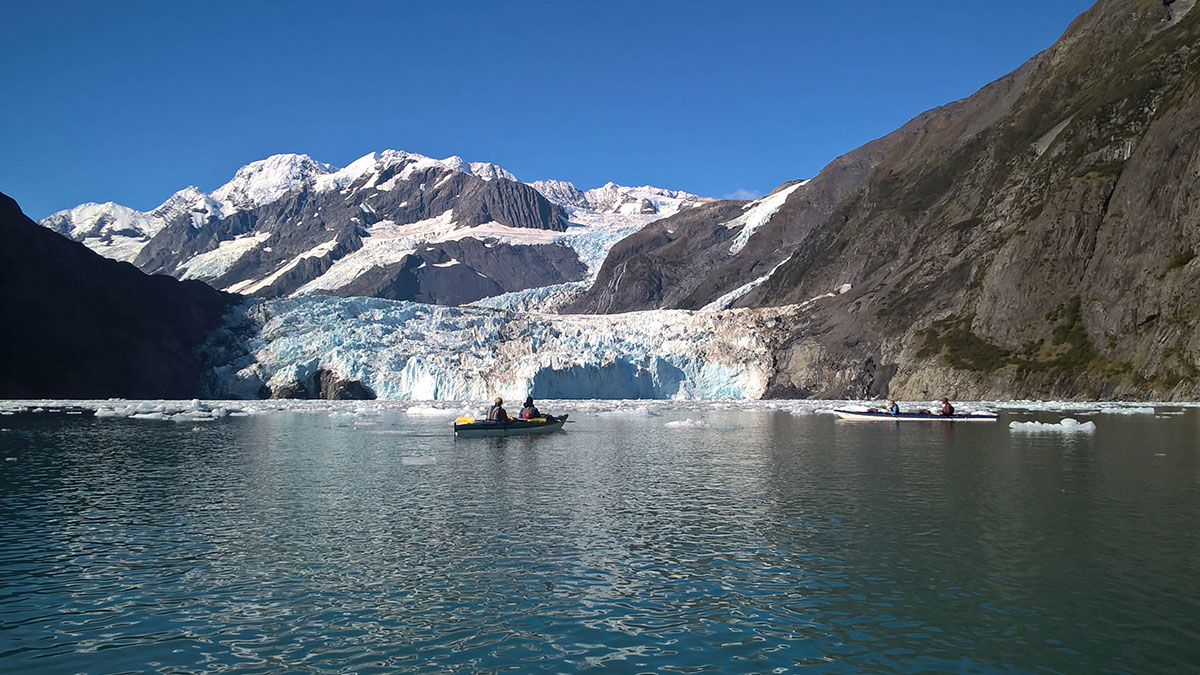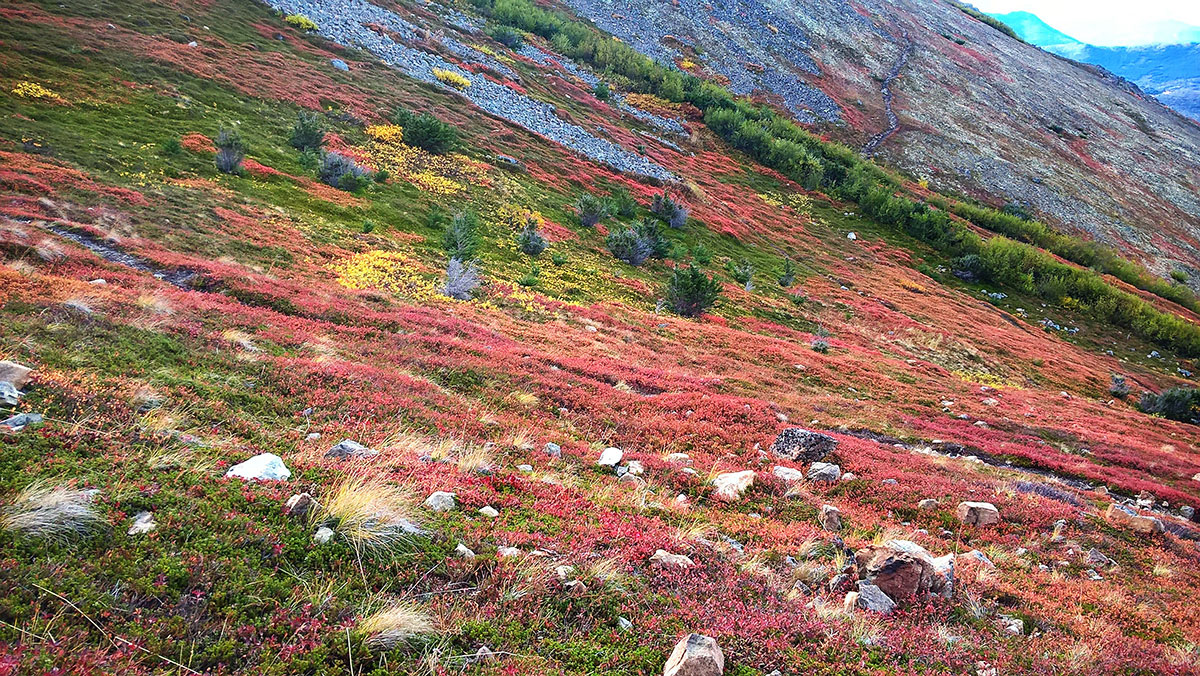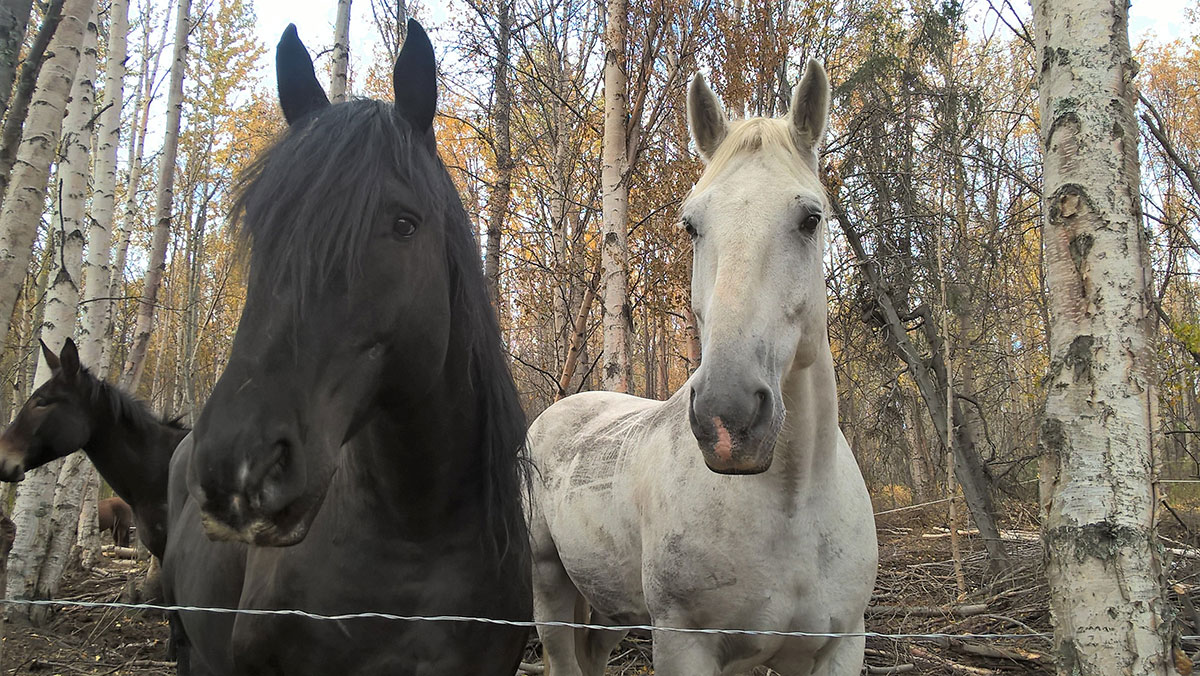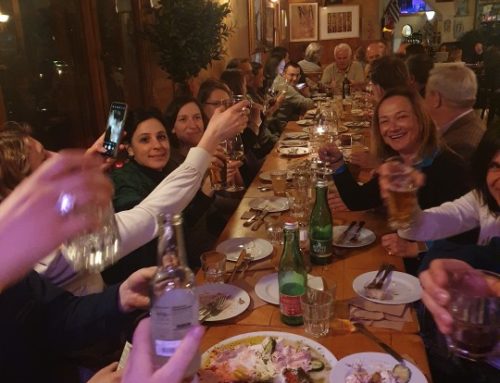When kayaking in Alaska, keep your ears open.
That is what my rudder man Jeremy, who happened to be the Executive editor of AFAR magazine, did. I found his description of our pre-summit adventure of the Adventure Travel World Summit 2016 in Anchorage – always recommended, wherever you would join an ATWS – so spot-on that I want to reshare it here.
What we got in this four-day sea kayaking & camping trip to the Harriman Fjord was one of those “tours of a lifetime” – being an exclusive group of four fearless travel pros, more than lucky to be hosted by MacGill and DD of Wilderness Alaska. Their laid-back, friendly, extremely well and responsibly organised style was amazing; nothing beats experience. We learnt so much about everything we saw and heard, and about 100% Leave No Trace of such a trip….and we completely slowed down, to “wake up in the wilderness” (still cherishing that little black thermos bottle ;=).
So this is also to say thank you once more to our hosts and my great fellow travellers Alex, Jeremy and Mark, for the wonderful experience. Now read further and enjoy:
Text by Jeremy Saum (Executive editor), originally published on 5 October 2016 in the AFAR magazine.
“You should have a bucket list for sounds. There should be a book called 1000 Sounds to Hear Before You Die, and there should be a chapter devoted to Alaska. From this trip, I would add three.
1. The thunder of a calving glacier.
We camped on Toboggan Beach, along Harriman Fjord, with glaciers all around us. From across the water, Surprise Glacier would send regular timpani rolls to our ears and, on occasion, to our very cores. Yes, seeing a giant slab of ice splash into the water is impressive, but when you think about the power it takes to create a rumble loud enough to travel several miles and still be loud enough to wake you up at night, you realize that nature—especially in Alaska—does not mess around.
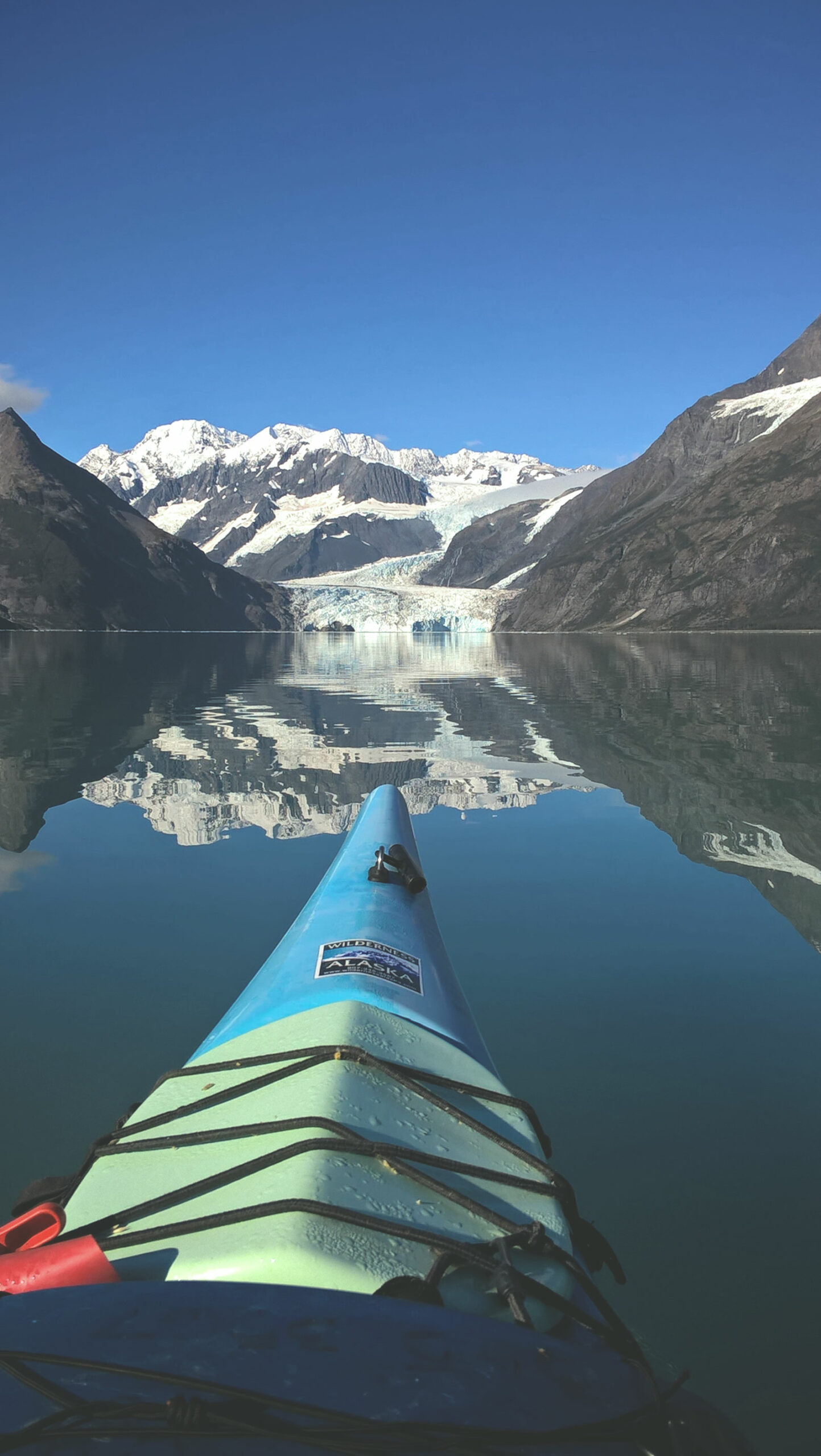
2. The melting of glacial ice.
When we paddled across the fjord to get closer to Surprise Glacier, the chunks of ice that we’d heard tumbling down now floated past us. As we dodged them, it sounded like we were navigating a bowl of Rice Krispies. Our guide, Macgill Adams, told us that the snaps, crackles, and pops were pockets of oxygen trapped in the ice that were being released as the ice melted. There was no wind, the water was calm, so all we heard was the ice. Macgill told us that back in the days when Japan’s economy was booming, people would harvest Alaskan glacial ice and ship it to Japan so that drinkers there could enjoy the same sound effects with their whiskey.

3. The breath of an orca.
Alaska offers up so much nature, sometimes it can be hard to take it all in. But even Alaska can be a tease sometimes. We knew orcas swam in the waters we were paddling, but we didn’t spot any from our kayaks. It wasn’t until we were in the water taxi back to Whittier that we saw two, swimming together with Barry Glacier as a backdrop. They weren’t right next to the boat, but they were close enough that we could hear them breathe. Again, there was no other sound to compete with. Just the sound of a powerful creature filling its lungs. Oceans, mountains—these things can make you feel small. So can comparing your lung capacity to a whale’s.”
